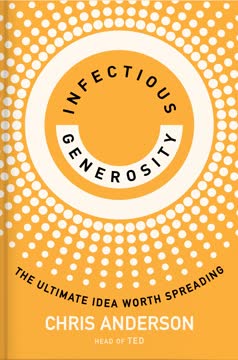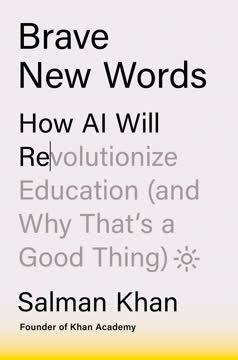Key Takeaways
1. Global progress and SDG shortfalls: The world has made significant strides, but we're falling short on SDG promises
"Just a century ago, two-thirds of the world lived in a permanent state of hunger. Now, economic development and agricultural innovation have reduced this problem to the point where it affects less than one-in-ten people."
Remarkable progress: Over the past century, the world has made incredible strides in reducing poverty, hunger, and disease. Life expectancy has increased dramatically, and more children than ever are receiving education. However, we are still falling short on many of the ambitious Sustainable Development Goals (SDGs) set for 2030.
SDG challenges: Despite good intentions, the SDGs have struggled to accelerate progress beyond pre-existing trends. The goals are often criticized for being too numerous and lacking focus. For example:
- Hunger: The world is not on track to end hunger by 2030, with progress stalling or even reversing in recent years.
- Education: While more children are in school, learning outcomes remain poor in many countries.
- Health: Maternal and child mortality rates have decreased but not fast enough to meet SDG targets.
2. The power of prioritization: Focusing on the most efficient policies can yield remarkable results
"For about $35 billion per year, we can save 4.2 million lives annually, and we can make the poorer half of the world more than a trillion dollars better off each and every year."
Benefit-cost analysis: The book advocates for using rigorous benefit-cost analysis to identify the most efficient policies. This approach allows policymakers to maximize the impact of limited resources by focusing on interventions that deliver the highest returns on investment.
Top 12 policies: The research identifies 12 highly effective policies that could dramatically improve lives in low- and lower-middle-income countries:
- Tuberculosis treatment
- Education reforms
- Maternal and newborn health interventions
- Agricultural R&D
- Malaria prevention
- E-procurement
- Nutrition programs
- Land tenure security
- Chronic disease prevention
- Trade liberalization
- Childhood immunization
- Skilled migration
These policies collectively offer an astounding average return of $52 in social benefits for every dollar spent.
3. Education reimagined: Teaching at the right level and structured pedagogy can revolutionize learning
"Although the world has almost doubled its spending on each primary school student since 1990, learning levels have remained low."
Teaching at the right level: Many classrooms in developing countries have students with widely varying skill levels. By grouping students based on their current abilities rather than age, teachers can more effectively address individual needs. This can be done through:
- Technology: Using tablets with adaptive learning software for one hour per day
- Reorganization: Shuffling classes for part of the day to group students by skill level
Structured pedagogy: Providing teachers with detailed lesson plans, training, and ongoing support can dramatically improve the quality of instruction. This approach is particularly effective in contexts where teachers may have limited formal training.
Benefits:
- Cost-effective: These interventions deliver learning gains equivalent to 2-3 years of regular schooling for a fraction of the cost
- Scalable: Can be implemented across diverse educational systems
- High return on investment: Every dollar spent on these programs yields $65 in long-term economic benefits
4. Maternal and newborn health: Simple interventions can save millions of lives
"Every two minutes, a woman dies from pregnancy or childbirth complications, and nine babies die."
Basic Emergency Obstetric and Newborn Care (BEmONC): Providing essential services during childbirth can dramatically reduce maternal and newborn deaths. Key components include:
- Clean birth environments
- Neonatal resuscitation equipment
- Skilled birth attendants
- Basic medications and treatments
Family planning: Increasing access to family planning services allows women to better time and space pregnancies, reducing health risks.
Impact:
- Lives saved: These interventions could prevent 161,000 maternal deaths and 1.2 million infant deaths annually
- Cost-effective: For every dollar spent, $87 in social benefits are generated
- Long-term benefits: Improved maternal and child health leads to better educational outcomes and increased economic productivity
5. Agricultural R&D: Investing in innovation can dramatically reduce hunger
"By 2056, the additional R&D in developing countries would increase agricultural output by 10% and reduce food prices by 16% as compared to keeping investment where it is today."
Focused investment: Directing more resources to agricultural research and development in low- and lower-middle-income countries can yield significant returns. This includes:
- Internationally aligned research centers
- National agricultural research systems
- Innovation to improve research efficiency
- Private sector investment in developing countries
Benefits:
- Hunger reduction: Could help over 130 million people avoid malnutrition by 2030
- Economic gains: Every dollar invested yields $33 in benefits
- Climate impact: Improved efficiency could reduce global climate emissions by more than 1%
6. Fighting infectious diseases: Targeted efforts against tuberculosis, malaria, and childhood diseases are highly effective
"With vaccines, humanity has a miraculous tool to turn the tide. One of the most successful public health interventions ever, immunization saves millions of lives each year."
Tuberculosis: Increasing diagnosis and treatment adherence could save 600,000 lives annually at a cost of $1 billion per year.
Malaria: Expanding the use of insecticide-treated bed nets could prevent 200,000 deaths each year for $1.1 billion annually.
Childhood immunization: Increasing vaccination rates could save 500,000 lives per year at a cost of $1.7 billion.
Key points:
- High return on investment: These interventions deliver between $46 and $101 in benefits for every dollar spent
- Proven strategies: Build on existing successful programs and technologies
- Broad impact: Reducing infectious diseases improves economic productivity and quality of life
7. Tackling chronic diseases: Cost-effective measures can prevent millions of deaths
"Even in low- and lower-middle-income countries, chronic disease deaths are now much more frequent than infectious disease deaths."
Effective interventions:
- Tobacco taxation and regulation
- Alcohol regulation
- Salt reduction campaigns
- Cardiovascular disease prevention and treatment
Impact:
- Lives saved: These policies could prevent 1.5 million deaths annually
- Cost-effective: Returns range from $23 to $101 per dollar spent
- Addressing a growing burden: Chronic diseases are an increasing concern in developing countries
8. E-procurement: Digitizing government purchases can significantly reduce corruption
"Procurement is a government's number one corruption risk: Every phase of a procurement process includes the risk of bribes, kickbacks, and collusion."
Benefits of e-procurement:
- Increased transparency
- Reduced opportunities for corruption
- More efficient government spending
- Increased competition among suppliers
Economic impact:
- Lower-middle-income countries: $309 in benefits for every dollar spent
- Low-income countries: $38 in benefits per dollar invested
- Potential savings: 6.75% reduction in procurement costs
9. Nutrition: Targeted interventions in the first 1,000 days of life yield lifelong benefits
"The greatest nutritional challenge is long-term undernutrition in children. The most important impact happens within a child's first 1,000 days, from conception until the child is two years old."
Key interventions:
- Multiple micronutrient supplements for pregnant women
- Calcium supplementation during pregnancy
- Complementary feeding promotion
- Small-quantity lipid-based nutrient supplements (SQ-LNS)
Impact:
- Stunting reduction: Could prevent stunting in millions of children
- Long-term benefits: Improved cognitive development, educational outcomes, and adult productivity
- Cost-effective: Returns range from $14 to $38 per dollar invested
10. Trade and migration: Lowering barriers can boost global prosperity and reduce inequality
"Economic evidence shows that one of the best ways to reduce inequality between nations is to allow workers to migrate to rich countries, where they will be much more productive."
Trade liberalization:
- Benefits: Increased competition, innovation, and economic growth
- Impact: A 5% increase in global trade could yield $11 in benefits for every dollar of cost
- Distributional effects: Greatest benefits accrue to low- and lower-middle-income countries
Skilled migration:
- Proposal: Increase highly skilled migration by 10%
- Benefits: Improved productivity, knowledge transfer, and remittances
- Return on investment: $20 in benefits for every dollar spent
11. Land tenure security: Formalizing property rights can unlock economic potential
"The World Bank estimates that 70% of people have no access to formal land registration systems."
Benefits of secure land tenure:
- Increased agricultural investment and productivity
- Improved access to credit
- Reduced conflicts over land
- Higher property values
Implementation:
- Rural areas: Focus on mapping and registering individual and communal land
- Urban areas: Formalize property rights, including in informal settlements
- Digitization: Create efficient, transparent land administration systems
Impact:
- Rural areas: Potential 15% increase in household incomes
- Urban areas: 25% increase in property values
- Return on investment: $18 to $30 in benefits per dollar spent
Last updated:
FAQ
What's Best Things First about?
- Focus on Prioritization: Best Things First by Bjørn Lomborg emphasizes the need to prioritize the most cost-effective policies to improve global conditions, particularly for the world's poorest.
- 12 Efficient Solutions: The book identifies 12 specific policies that can significantly enhance lives in low-income countries, focusing on their cost-effectiveness and potential for immediate impact.
- Benefit-Cost Analysis: Lomborg uses benefit-cost analysis to evaluate these policies, showing that substantial social benefits can be achieved for every dollar spent.
Why should I read Best Things First?
- Actionable Insights: The book offers concrete recommendations for policymakers, philanthropists, and individuals interested in making a real difference in global development.
- Evidence-Based Approach: It is grounded in extensive research and collaboration with top economists, ensuring that the proposed solutions are backed by data and analysis.
- Urgency of Action: With many Sustainable Development Goals (SDGs) off-track, the book emphasizes the need for immediate action on the most effective policies to avoid further delays in progress.
What are the key takeaways of Best Things First?
- Prioritize Efficient Policies: The book stresses the importance of focusing on the most efficient solutions first, rather than spreading resources too thinly across many initiatives.
- Cost-Effectiveness: Lomborg highlights that investing approximately $35 billion annually in the identified policies could save millions of lives and generate over a trillion dollars in benefits.
- Global Cooperation Needed: Achieving these goals requires collaboration among governments, NGOs, and individuals to redirect resources towards the most impactful areas.
What are the best quotes from Best Things First and what do they mean?
- “We can’t do everything.”: This quote encapsulates the book's central theme that prioritization is essential in addressing global challenges effectively.
- “The best policies pay off more than 50:1.”: This highlights the incredible return on investment that can be achieved through the recommended policies, emphasizing their efficiency.
- “We have to choose to focus on some things and say no to others.”: This reflects the uncomfortable reality of resource allocation, underscoring the need for strategic decision-making in policy implementation.
How does Best Things First define benefit-cost analysis?
- Comprehensive Evaluation: Benefit-cost analysis is defined as a method that assesses all benefits and costs associated with a policy, both financial and non-financial.
- Monetary Value of Life: The analysis assigns a monetary value to saving lives, allowing for a clear comparison of the effectiveness of different policies.
- Present Value Calculation: Future benefits and costs are discounted to present value, ensuring that long-term impacts are appropriately considered in decision-making.
What is the significance of the Sustainable Development Goals (SDGs) in Best Things First?
- Current Status: The book discusses how many SDGs are off-track, emphasizing the urgency of focusing on the most effective policies to meet these goals.
- Critique of SDGs: Lomborg critiques the SDGs for being overly ambitious and lacking focus, which has led to stagnation in progress.
- Call for Action: The author argues that by implementing the 12 identified policies, we can make significant strides towards achieving the SDGs by 2030.
How does Best Things First address malnutrition?
- Focus on Early Intervention: The book emphasizes the importance of addressing malnutrition during the first 1,000 days of a child's life, from conception to two years old.
- Cost-Effective Solutions: Lomborg discusses specific interventions, such as providing multi-micronutrient supplements to pregnant women, which can yield significant health benefits at a low cost.
- Long-Term Impact: By improving nutrition, the book argues that societies can enhance productivity and economic growth in the long run.
What role does e-procurement play in Best Things First?
- Efficiency in Government Spending: Lomborg highlights e-procurement as a tool for improving government efficiency and transparency in procurement processes.
- Significant Savings: The book presents data showing that for every dollar spent on e-procurement, low-income countries can save $38.
- Challenges to Implementation: Despite its benefits, Lomborg discusses the political and practical challenges that hinder the widespread adoption of e-procurement.
How does Best Things First propose to improve land tenure security?
- Formal Registration Systems: The book advocates for establishing formal land registration systems to provide secure property rights.
- Case Study of Rwanda: Lomborg uses Rwanda as a successful example of land tenure reform, where a nationwide land registration project significantly improved property security and economic outcomes.
- Investment in Infrastructure: The book emphasizes the need for investment in the infrastructure required to support land registration, including surveying and digitization of land records.
What are the implications of chronic diseases discussed in Best Things First?
- Shift in Global Health Burden: Lomborg notes that chronic diseases have become the leading cause of death worldwide, particularly in low- and middle-income countries.
- Cost-Effective Interventions: The book identifies specific interventions, such as improving access to medications for chronic diseases, that can save lives at a low cost.
- Preventive Measures: Lomborg emphasizes the importance of preventive measures, such as lifestyle changes and early detection, to combat chronic diseases.
How does Best Things First suggest addressing childhood immunization?
- Vaccination as a Priority: The book highlights the critical role of childhood immunization in preventing disease and saving lives.
- Global Disparities: Lomborg discusses the disparities in vaccination rates between high-income and low-income countries, emphasizing the need for increased investment in vaccine distribution and education.
- Long-Term Benefits: The book argues that improving vaccination coverage not only saves lives but also contributes to economic growth by ensuring a healthier, more productive population.
What challenges does Best Things First identify in implementing these policies?
- Political Resistance: The book acknowledges that political leaders may resist prioritizing certain policies due to competing interests and the discomfort of saying no to other initiatives.
- Resource Allocation: There is often a lack of funding and resources directed towards the most effective solutions, leading to missed opportunities for impact.
- Public Awareness: A general lack of awareness about the benefits of these policies can hinder their implementation, necessitating education and advocacy efforts.
Review Summary
Best Things First by Bjorn Lomborg presents 12 cost-effective solutions to global issues, focusing on areas like health, education, and trade. Readers appreciate the data-driven approach and potential impact of the proposed interventions. However, some criticize the book's dry writing style, oversimplification of complex issues, and heavy reliance on the author's own research. While many find the ideas compelling, others question the methodology and lack of consideration for implementation challenges. Overall, the book sparks discussion on prioritizing global development efforts.
Similar Books







Download PDF
Download EPUB
.epub digital book format is ideal for reading ebooks on phones, tablets, and e-readers.






